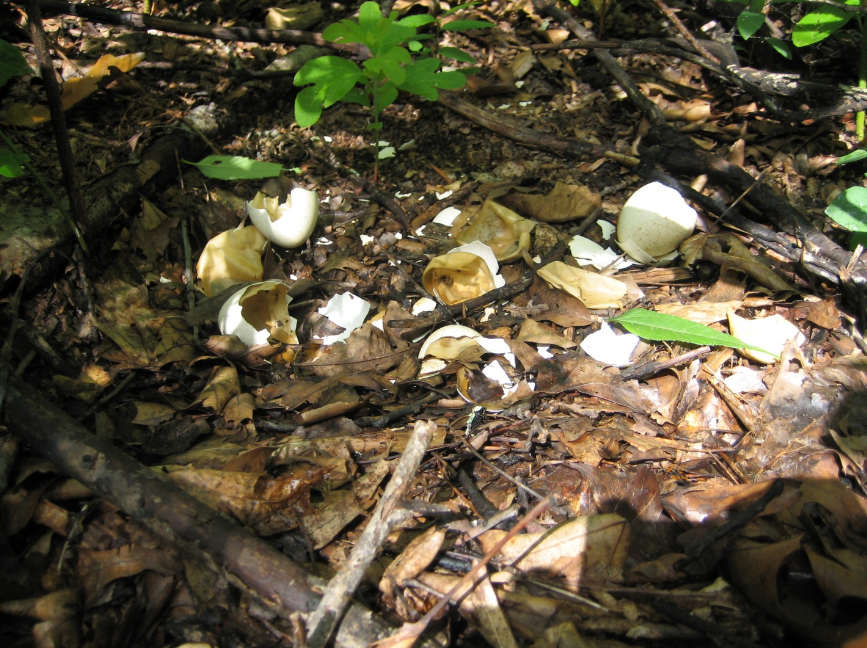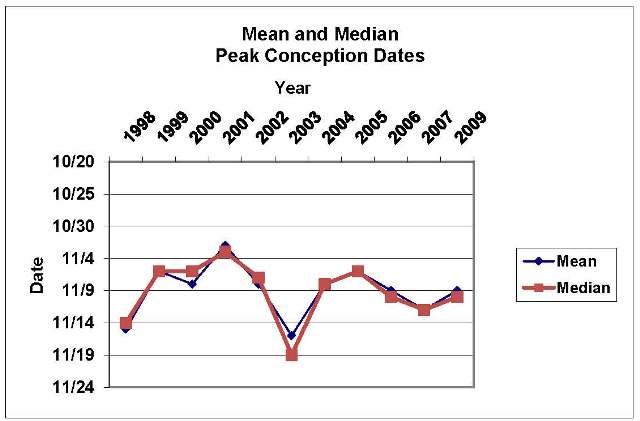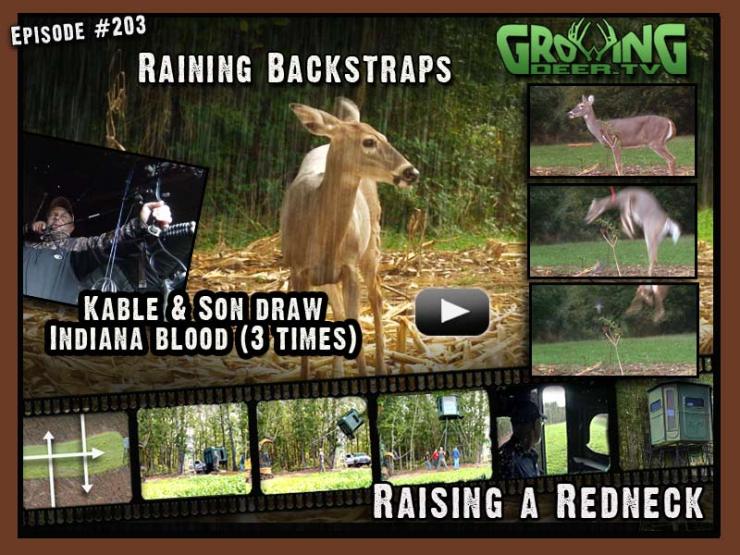Category: Uncategorized
Trapping Predators Boosts Nest Success
Tuesday marked the end of a successful trapping season at The Proving Grounds. We’re excited to have removed 41 predators from the property by trapping daily and using a variety of baits to bring them into our Duke traps. That means most likely more turkey poults, quail chicks, and fawns will survive!

Nest predators can cause serious damage to a turkey population.
The GrowingDeer Team has been trapping predators consistently for seven years in an effort to balance the predator and prey population. We’re serious about trapping because studies show that racoons, opossums, and skunks are intense nest predators. Turkeys are especially susceptible to predation because they nest on the ground for approximately 28 days and then roost on the ground for approximately two weeks until the poults can fly.
It almost always rains at least once during the nesting season and wet hens have an odor even humans can easily smell. This makes it very easy for predators to find turkey nests and consume all the eggs and even kill the hen at times. Researchers used to call this the wet hen theory but it’s not just theory.
Last year The Proving Grounds had a high turkey poult survival rate compared to the statewide average. This was in part because of the serious effort the team has put into trapping. As land managers and hunters, we want a healthy turkey population! By trapping predators, we are one step closer to a successful turkey season.
Enjoy Creation,
Jessica
WORN FEATHERS
By now many of you have tagged a tom! You may have already enjoyed a meal of fresh turkey! However, there’s more to a turkey than great meat. Turkey feathers are cool. Many Native American tribes prized turkey feathers for use in ceremonies and fletching for arrows. My daughters enjoy making jewelry and other items…Read MORE HERE
PATTERNING YOUR TURKEY GUN
I really enjoy turkey hunting! I also enjoy eating wild turkey so I want to be successful! In addition to practicing calling, scouting, etc., there’s another critical step to be a successful turkey hunter. That’s patterning and practicing with a turkey gun! Turkey guns are usually 12 gauge shotguns with an extra full choke. Mine…Read MORE HERE
OVERHANGING LIMBS
Deer scrapes consist of an area on the ground where deer paw away all debris and expose the soil under an overhanging limb. Deer commonly urinate and defecate on the exposed dirt in the scrape. These are very visual signs that are easily seen. The overhanging limb is also a significant part of “scrape communication”…Read MORE HERE
Finding Sheds
I’ve shared about shed hunting during the past two entries for this blog. During those two weeks the weather has been abnormally cold and many areas have received lots of snow. There’s no doubt that deer throughout most of the whitetail’s range are under tremendous stress. Deer will have trouble maintaining their body heat and even finding enough food under the deep snow cover in some areas. Read More at Winchester.com…
Redneck Strategies & Prime Bow Hunting – Episode #203
Trying to figure out a solution to a hard to hunt field? Watch this episode to see how we solved that problem. Plus, Pro-staffer Kable McAlpine and son, Alec, bring home some venison for their Indiana freezer! One day, two bowhunters, three deer down!
How to Analyze Drought Stress on Whitetails
Iowa State probably does more research about growing corn than any other university. I have learned much about growing corn from their publications and staff. Iowa State’s Extension department publishes a great E newsletter titled Crop Management News.
The issue today does a great job of explaining how temperature and soil moisture availability impact the productivity of corn. As I’ve referenced frequently on recent episodes of GrowingDeer.tv, when growing conditions cause stress on forage or grain crops the critters are stressed also.
It is easier to monitor the impact of stress caused by drought on a corn crop. Researchers can simply sample many aspects of the crop on a daily basis. In fact, some of these factors (amount the leaves are twisted, tassel development, etc.) can be estimated from the comfort of a pickup.
It’s much more difficult to monitor deer. They are mobile and tend to be nocturnal. They don’t like to be held or measured. Capturing deer is not necessary to know that they are stressed when crops are not expressing their full potential. I’m not aware of an exact index that compares bushels of corn produced per acre that equates to inches of antler development per age class of bucks.
However when corn, soybean, alfalfa, etc., production is limited by harsh growing conditions, it is certain that deer won’t express their full potential. For example, today there was an Associated Press article posted on Fox News that quoted the Texas AgriLife Extension Service as reporting that pregnant does are having difficulty carrying fawns to term and other fawns are being born prematurely due to heat stress. Likewise the agricultural crops are very unproductive or a total failure in many parts of Texas. Tough growing conditions impact all living things!
That’s one reason I enjoy reading Crop Management News. It provides great information for growing quality food plots, and also provides a real-time index of the growing conditions for crops and deer in Iowa. In addition, the information is useful no matter where I wish to grow crops or deer!
Information is the most valuable tool for any profession. I hope this source of information helps you become a better deer manager.
Growing Deer together,
Grant
Waiting on the Weather
It’s been warmer than normal throughout most of the whitetails’ range. There was great acorn production in some areas and much corn still standing in others. The combination of warm temperatures when deer have their winter coat and easy access to food make for difficult hunting conditions. During these conditions, mature bucks simply aren’t very active during daylight hours and don’t need to move far to feed. However, there are fewer acorns and less corn available as the fall progresses. That combined with a cold front in the Rockies pushing east should make for some good hunting in the Midwest by later this week and the East by early next week.
If you’re a hunting local turf, plan on hunting the prime travel corridor locations when this next weather front reaches your area. This could be a period of substantially increased daytime deer activity!
If your “suitcase” hunting (hunting an area far enough from home you packed a suitcase), then hunt as close as you can to a suspected bedding area without disturbing deer until the weather changes. Try to locate travel corridors but don’t hunt them and condition deer to your presence until conditions change and deer are more likely to be more active during daylight hours. Remember that spooked deer are difficult to hunt so make sure your scouting activities aren’t alerting them to your presence.
Harvesting mature bucks on a sustained basis requires much more strategy and skill than harvesting immature deer. Mature deer readily avoid areas they associate with danger. They rarely give hunters a second chance. That’s why watching weather patterns and limiting your intrusion into areas they travel until the conditions are favorable is critical to harvesting mature bucks consistently.
Growing (and hunting) Deer together,
Grant
Interpreting the Rut
It is 70+ degrees with blue skies again today. Although I’m seeing active scrapes and rubs I haven’t observed much rut behavior from the tree. Oftentimes hunters assume that the rut changes date because they don’t observe rut behavior at the same time from year to year. After reviewing literally hundreds, if not thousands, of conception dates from harvested whitetail does it is obvious that the actual timing of breeding doesn’t change drastically from year to year. However, the amount of daytime activity is based on several conditions including weather, specifically daytime temperatures.

Imagine running a long race for a very valuable prize when it is hot and you are forced to wear a winter coat. That is an illustration of mature bucks during these pre-rut days when daytime temperatures are above normal. Temperatures seem to be a bit less of a determinate of daytime buck activity during the rut because the prize is very obvious to them. However, during the pre-rut there may not be enough excitement to cause the bucks to be cruising during the daytime with their winter coat on.
These conditions can change at any time. This is a huge advantage for home turf hunters and a good reason for suitcase hunters to schedule as many days as possible for their trip, allowing time for weather conditions to be favorable. Understanding a deer’s reaction to specific weather conditions is a key to harvesting mature bucks on a sustained basis.
Growing Deer together,
Grant
20 degrees cooler!!
I’m trying to finish some projects so I can go hunting this afternoon! The temperatures are approximately 20 degrees cooler this afternoon than they’ve been in weeks! I believe decreases in temperature of this magnitude prompt increased activity of mature bucks during daylight hours.
I and several other scientists have attempted to determine the weather conditions that prompt deer to move during daylight. We’ve analyzed huge datasets of deer movement collected by personal observations, radio telemetry collars, GPS collars, trail camera images, etc. Unfortunately, no reliable trends have been reported. That’s not to say that some patterns don’t exist. The deer are just keeping them a secret.
It’s probably because we scientists haven’t analyzed the appropriate combination of factors yet. It becomes a very complicated analysis to consider deer activity data compared to multiple factors simultaneously. It would be simple if when the barometric pressure dropped two percent, deer activity increased 20 percent. However, using barometric pressure as a single factor rarely yields predictable results. When barometric pressure, temperature, the difference of temperature from normal, the change of temperature during the past 24 hours, cloud cover, moon phase, moon declination, precipitation, etc., etc., etc., are combined the data and results often are a useless mass of charts.
It’s very difficult to have a large enough data set to ensure the results of the analysis are meaningful. For example, I’m working with a grad student at the University of Georgia to analyze 11 years of observation data from one of my research projects. The observers that collected data for this project were trained and consistent throughout the project. We logged more than 1,000 hours of observations annually for each of the 11 years. We harvested more than 1,000 deer as part of that project.
Deer are champions at surviving. They not only respond to changes in the weather, they also respond to predators and other threats. It’s tough to sort out why deer are moving because the researcher never knows all the factors wild, free-ranging deer are analyzing and responding to.
It’s frustrating! However, the ongoing research is fun! In fact, I’m ready to go collect some more data this afternoon!
Growing (and studying) Deer together,
Grant






















